Project Handover Samples
-
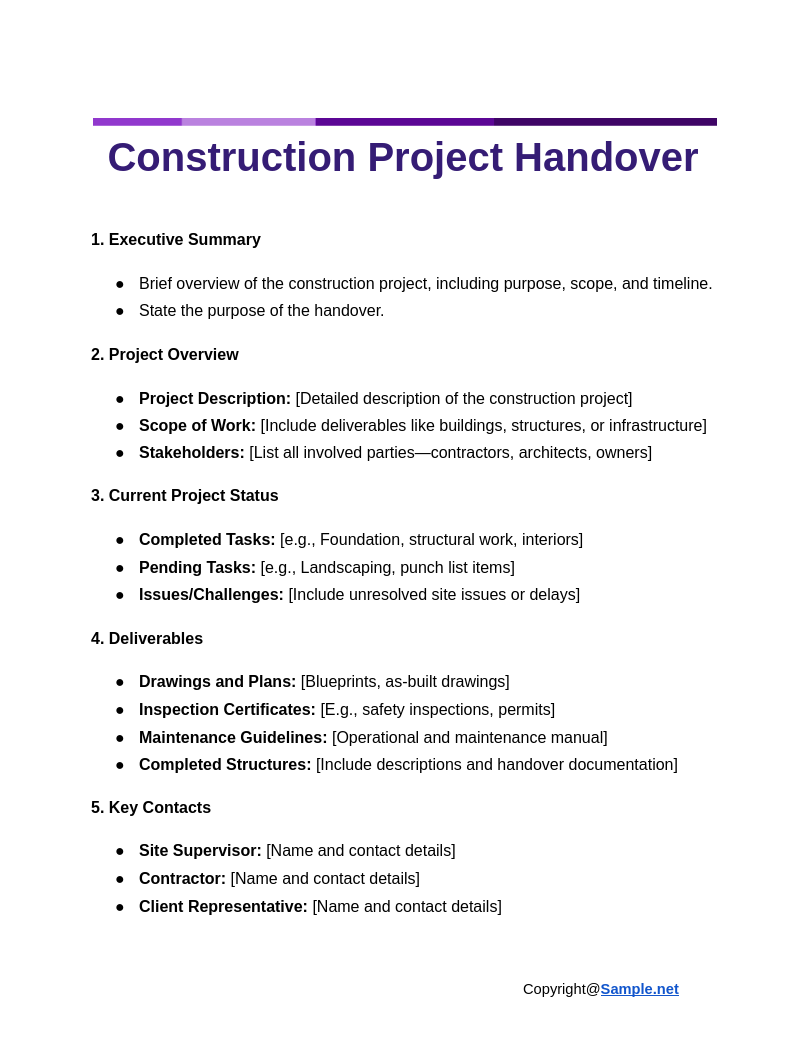
Construction Project Handover
download now -
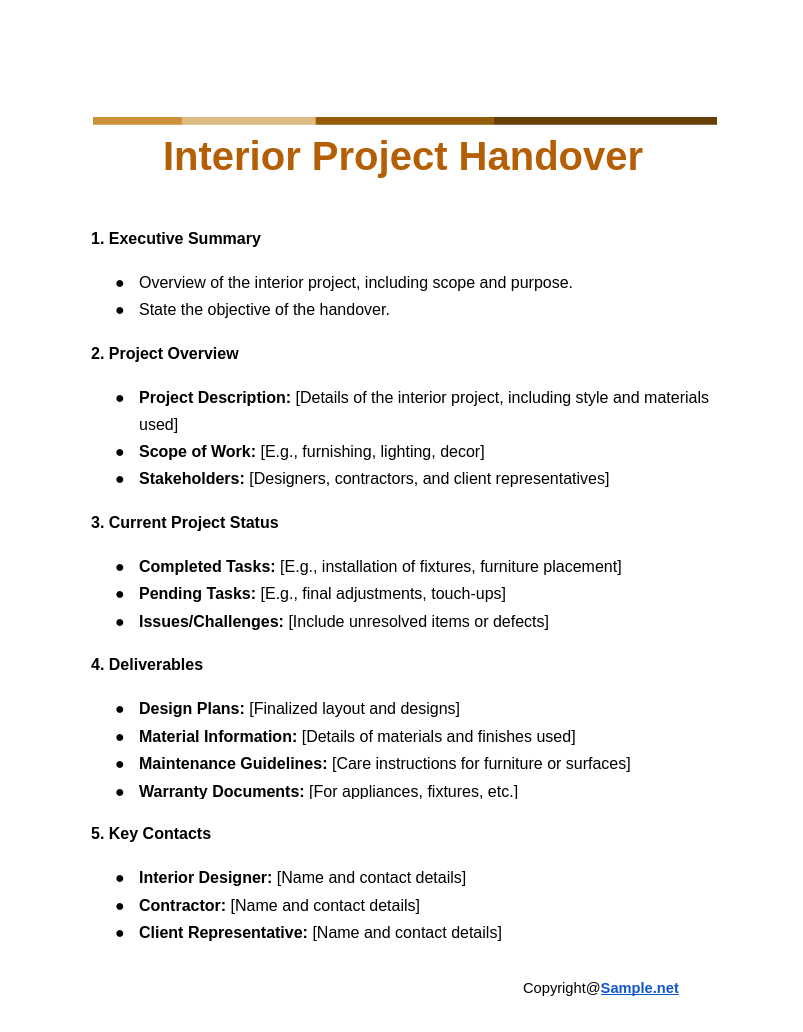
Interior Project Handover
download now -
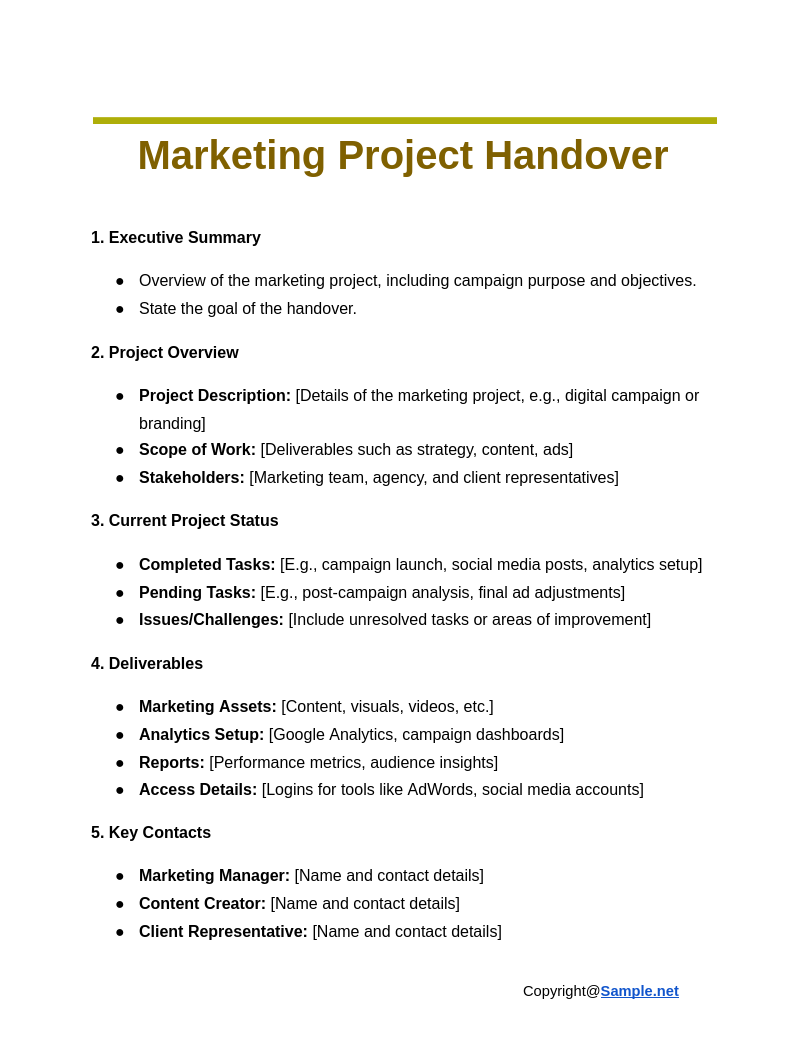
Marketing Project Handover
download now -
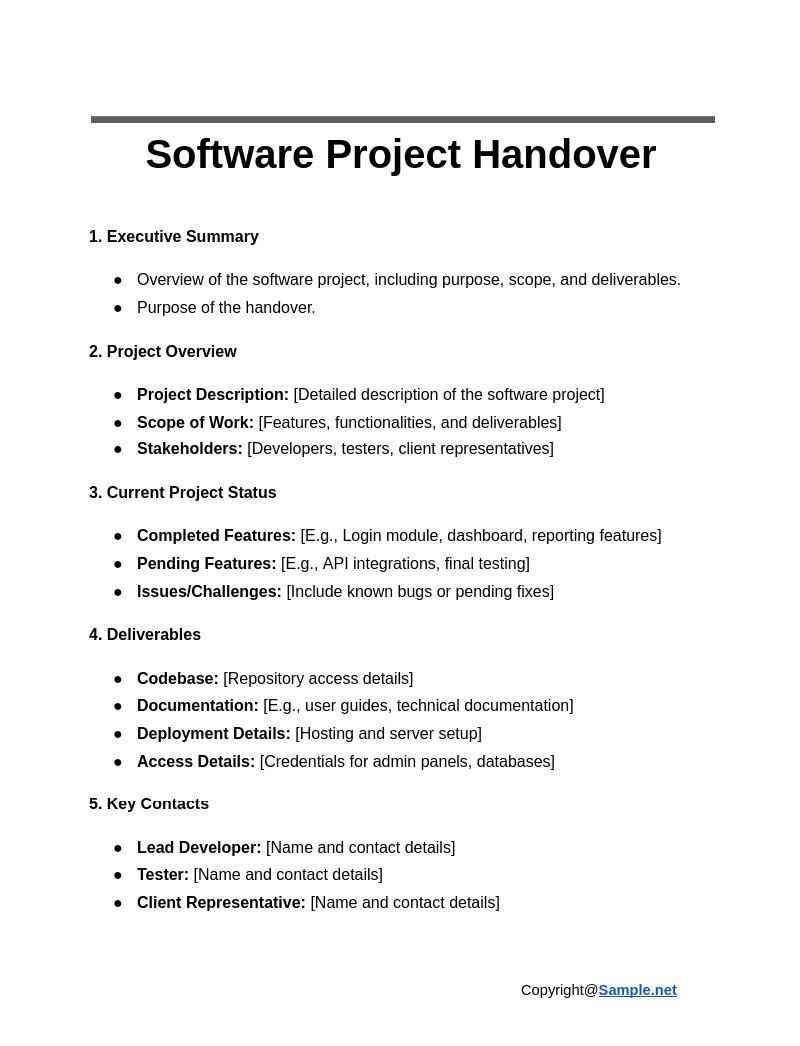
Software Project Handover
download now -

Project Handover Report Template
download now -
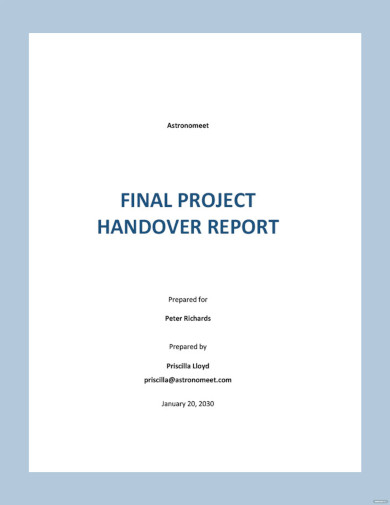
Final Project Handover Report Template
download now -
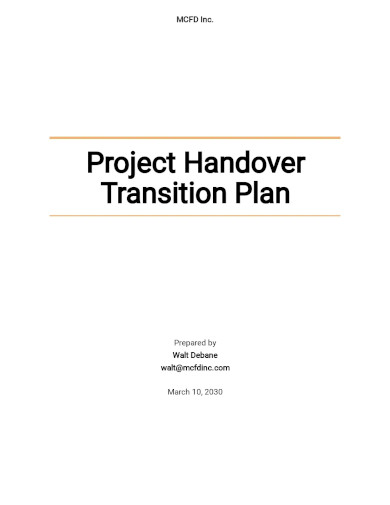
Project Handover Transition Plan Template
download now -
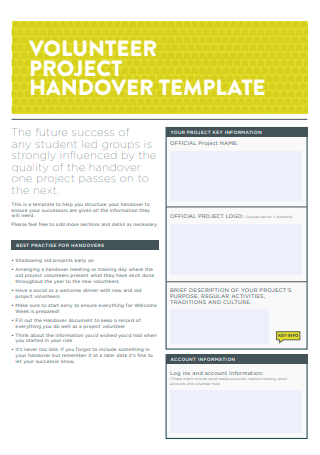
Volunteer Project Handover Template
download now -

Standard Construction Project Handover
download now -
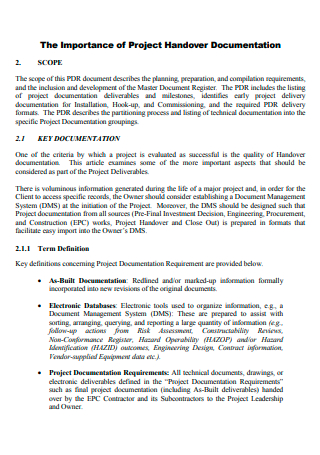
Project Management Handover Documentation
download now -
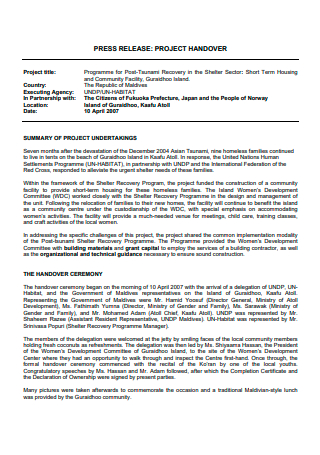
Press Release Contractor Project Handover
download now -
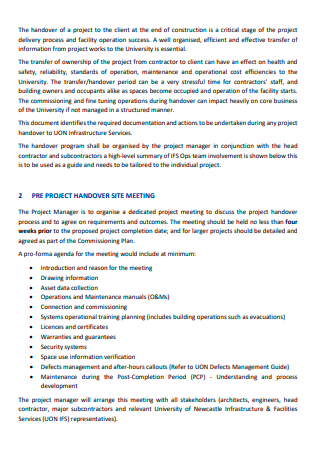
Basic Project Plan Handover
download now -
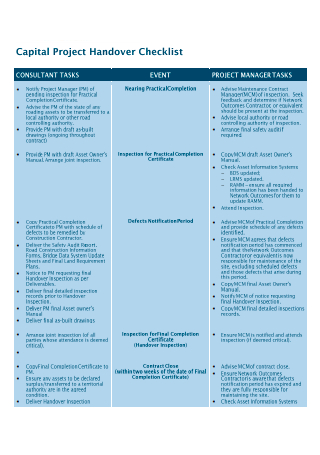
Building Capital Project Handover Checklist
download now -
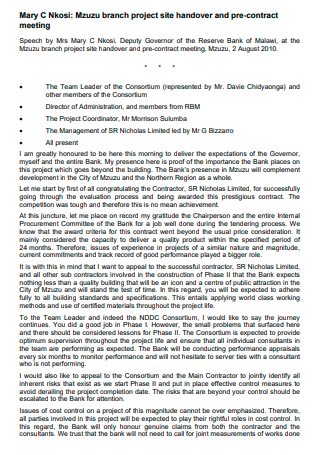
Project Procedure Site Handover
download now -

Project Client Handover Asset Officer
download now -
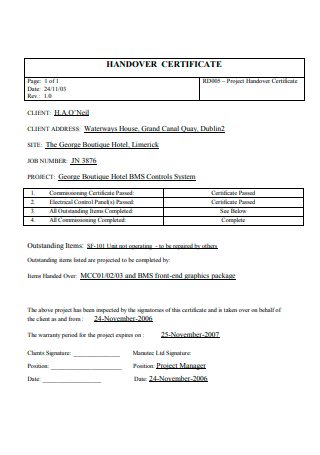
Employee Project Handover Certificate
download now -
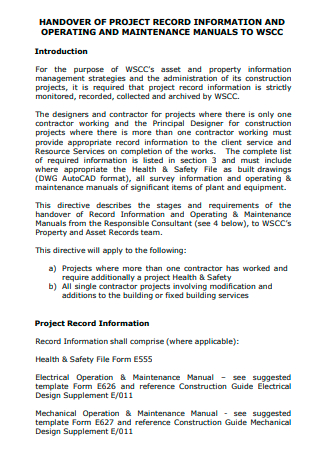
Project Completion Record Handover
download now -

Capital Project Form Handover
download now -
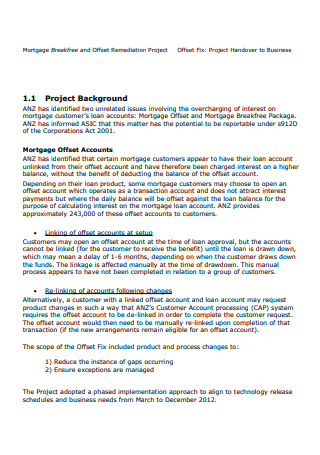
Business Chart Project Handover
download now -
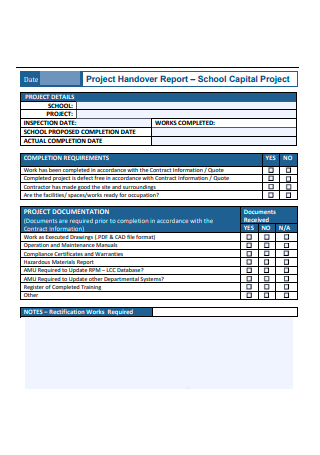
School Capital Project Work Handover Report
download now -
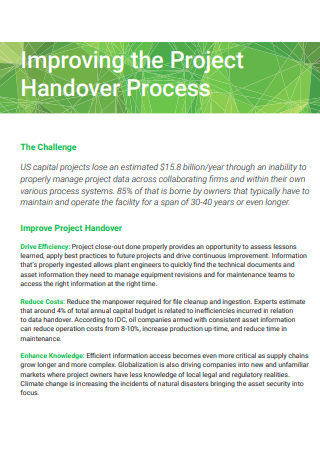
Project Handover Sheet Example
download now -
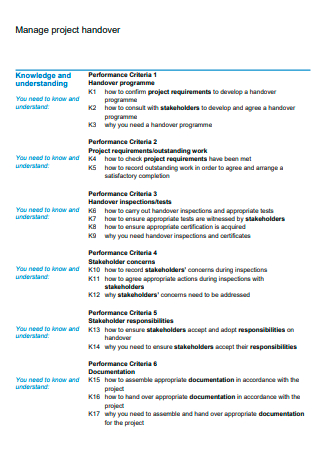
Manage Request Project Handover
download now -
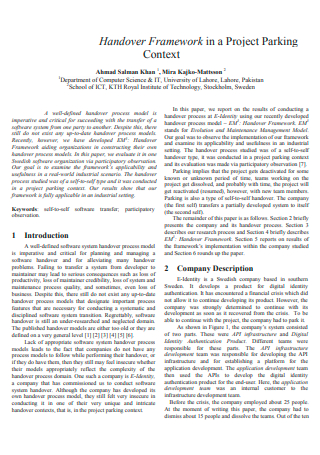
Project Parking Handover
download now -
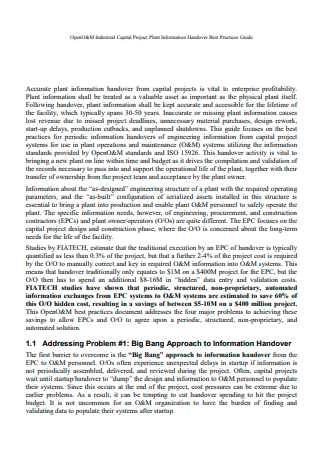
Industrial Capital Project Plant Handover
download now -
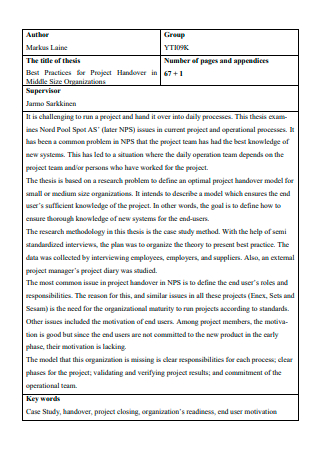
Middle Size Organizations Project Handover
download now -
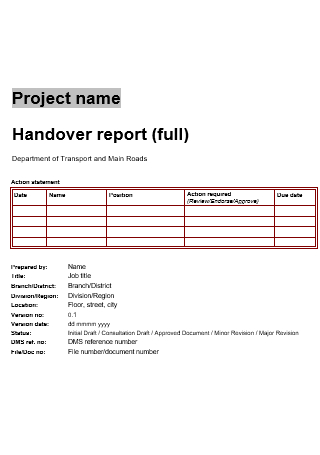
Project Handover Report
download now
FREE Project Handover s to Download
Project Handover Format
Project Handover Samples
What is a Project Handover?
Best Practices for a Successful Project Handover
How to Create an Effective Project Handover?
FAQs
What is the importance of project management?
Who is responsible for project support?
What are project completion and project handover?
What documents are needed for a project handover?
Why is training important in a project handover?
What are the risks of an ineffective project handover?
What is the difference between internal and external handovers?
How do you measure the success of a project handover?
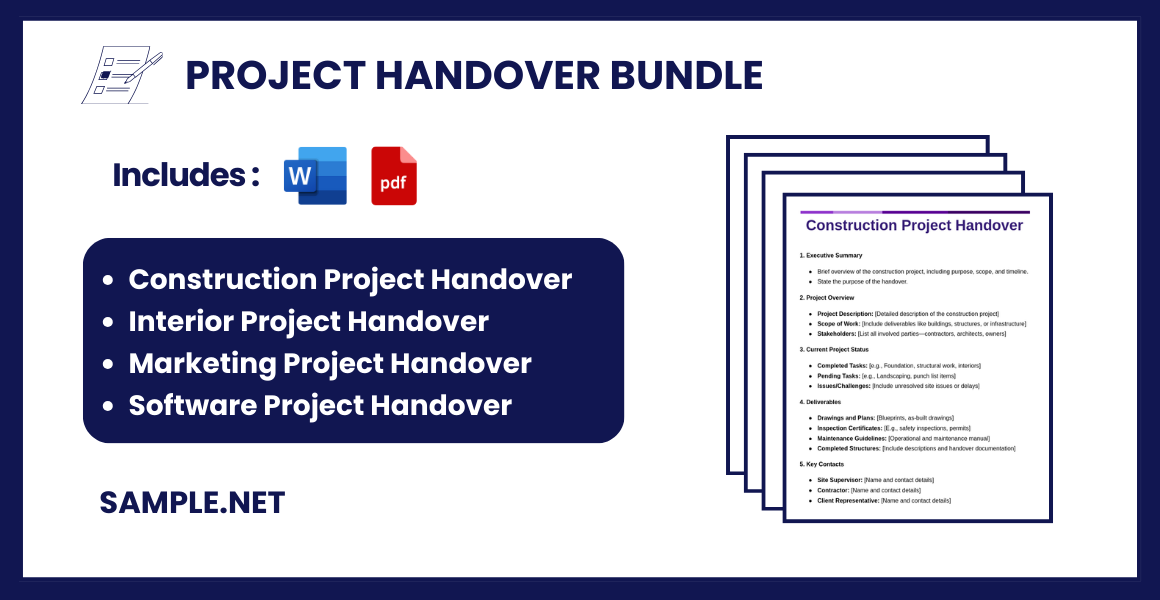
Download Project Handover Bundle
Project Handover Format
Project Name: [Insert Project Name]
Date: [Insert Date]
Prepared By: [Insert Name]
Handover To: [Insert Team/Individual Name]
1. Executive Summary
- Brief overview of the project, including objectives, scope, and key milestones.
- State the purpose of the handover.
2. Project Overview
- Project Description: [Detailed project description]
- Scope of Work: [Include deliverables and boundaries]
- Stakeholders: [List of all stakeholders and their roles]
3. Current Project Status
- Completed Tasks: [List major tasks completed]
- Pending Tasks: [List tasks that are incomplete or in progress]
- Issues/Challenges: [Highlight any known issues or risks]
4. Deliverables
- Documentation: [Attach or reference all relevant documents, e.g., project plan, reports, manuals]
- Technical Specifications: [Include any specific details about technical deliverables]
- Files/Assets: [Provide links or access details for important files]
- Completed Work: [Details of work handed over]
5. Key Contacts
- Team Members: [Name, role, and contact information]
- Client Contacts: [Name, role, and contact information]
- Third Parties: [If applicable, include vendor or contractor details]
6. Tools and Access Details
- Login Credentials: [List usernames and passwords for tools/software, if applicable]
- System Access: [Details on systems/platforms used]
- Licenses: [Information on licenses transferred or required]
7. Pending Approvals
- [List all pending approvals with the responsible individuals and expected timelines.]
8. Knowledge Transfer
- Training Provided: [Details of any training given to the new team]
- Key Learnings: [Highlight lessons learned from the project]
- FAQs: [Provide answers to common questions related to the project]
9. Post-Handover Support
- Support Team: [Contact details of support team]
- Maintenance Schedule: [If applicable, include a schedule for maintenance tasks]
- Escalation Process: [Details of how to escalate issues]
10. Sign-off
Prepared By:
Name: [Insert Name]
Signature: [Insert Signature]
Date: [Insert Date]
Received By:
Name: [Insert Name]
Signature: [Insert Signature]
Date: [Insert Date]
What is a Project Handover?
A project handover occurs at the conclusion or completion of a project to install, build, or alter an asset. It often entails the customer formally accepting the asset, work area, and pertinent information from the contractor. A time of preparation by outgoing personnel; a handover in which outgoing and incoming staff contact to exchange task-relevant information; and incoming personnel cross-check information as they acquire responsibility for the assignment. A project handover to a client will be a smoother process with an accompanying document. You can utilize the project handover template available so you can ensure no parts are skipped over. You can also see more on Job Handover Note.
Best Practices for a Successful Project Handover
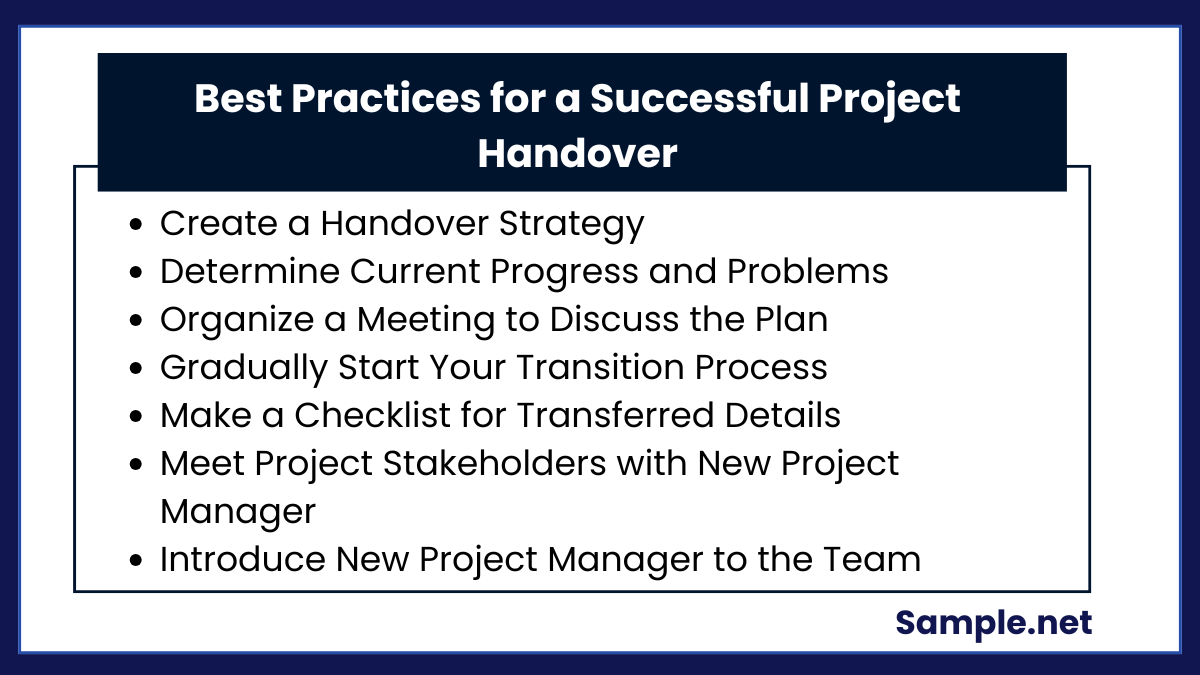
Handing over a project to a new project manager can occur for a variety of reasons. Perhaps you have an emergency or your retirement is approaching. In these instances, it is critical to delegate a project to another project manager to complete it on time. Now, turning off a project is not an easy undertaking, and it should not be treated lightly. Many criteria and components must be considered to ensure that stakeholders and clients are pleased and that the project returns the same profitable outcomes. You can also see more on Project Tracking. The following are some tips that will assist project managers in effectively completing a project handover.
How to Create an Effective Project Handover?
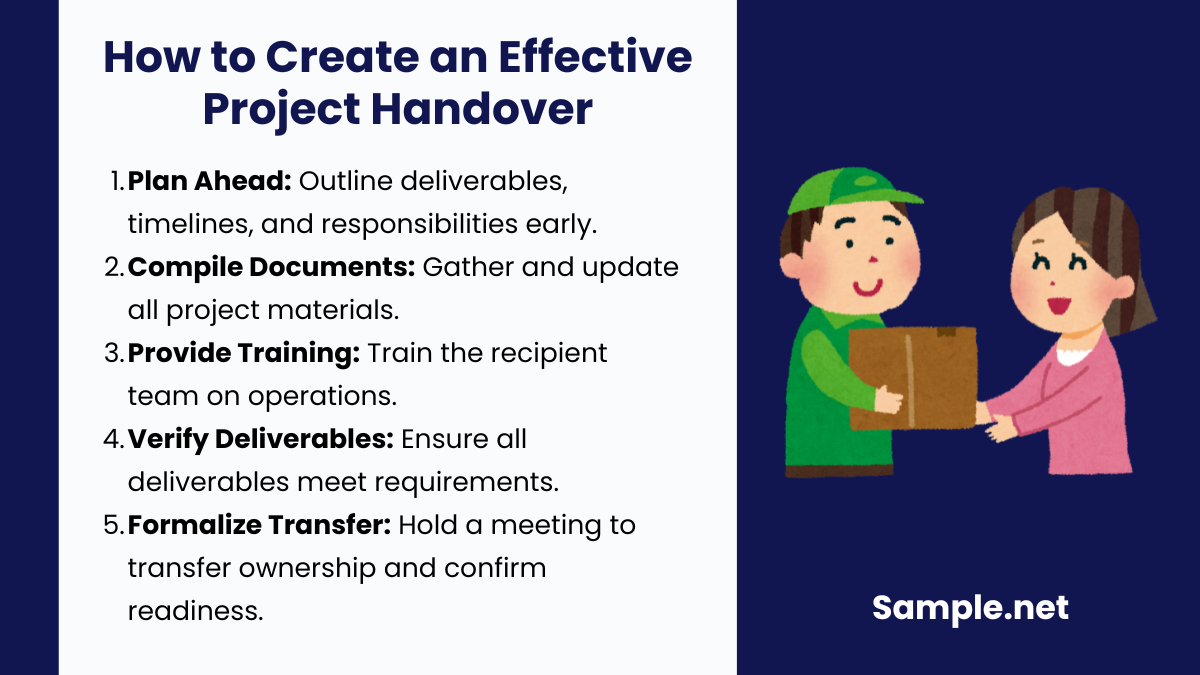
Step 1: Plan Early
Begin preparing for the handover during the early phases of the project. Outline key handover deliverables, timelines, and responsibilities in a formal plan. This ensures the handover aligns with the project’s objectives and reduces last-minute confusion.
Step 2: Compile Documentation
Gather all project documents, including contracts, designs, manuals, test reports, and operational guides. Ensure the documentation is up-to-date and accessible for the receiving team, enabling continuity and knowledge retention. You can also see more on Project Budgets.
Step 3: Conduct Training
Arrange training sessions for the recipient team to explain the project deliverables, operations, and maintenance procedures. Address any questions or concerns to foster a clear understanding and confidence in managing the project.
Step 4: Verify Deliverables
Perform a comprehensive review of all deliverables to confirm they meet project requirements. Conduct walkthroughs, testing, or demonstrations with stakeholders to validate the project’s functionality and quality. You can also see more on Group Project Report.
Step 5: Formalize the Handover
Conduct a formal handover meeting where the project team transfers ownership through signing documents and agreements. Share all deliverables, close outstanding issues, and confirm the recipient’s readiness.
A project handover ensures that the fruits of a project are effectively transitioned to stakeholders or operational teams. Properly executed handovers reduce risks, clarify responsibilities, and maximize the value delivered to stakeholders. By planning, documenting, training, and formalizing the handover, teams can achieve seamless transitions and long-term project success. Whether internal or external, every handover phase is crucial for sustaining operational excellence and client satisfaction. You can also see more on Project Deployment Plan.
FAQs
What is the importance of project management?
Project management’s relevance in businesses cannot be emphasized. When done correctly, it helps every aspect of the business work more smoothly. It enables your team to focus on the important job without being distracted by projects that go off track or budgets worksheet that spiral out of control. A project manager’s most significant talents include leadership, communication, time management, negotiation, team management, and critical thinking. They must also be able to stay up with project management trends and make full use of the tools at their disposal.
Who is responsible for project support?
To keep the project going smoothly, a project coordinator undertakes administrative chores for the project manager and team members. Ordering equipment list and supplies, managing deadlines and workflow, and organizing meetings and appointments are all examples of this. They act as a project support team, resolving difficulties for which the project manager may require assistance, steering a project in a new direction, and approving budget modifications.
What are project completion and project handover?
The project conclusion outlines how the project aim was met successfully. It encompasses the project’s last phases, which include product acceptance, a final analysis, experience assurance, and final project resolution. The project conclusion report summarizes these aspects. The moment of transition into occupancy is marked by the completion of the works and transfer to the occupant. The procedure entails the fitted-out area being given over and recognized as completed in compliance with the criteria by the tenant and owner.
What documents are needed for a project handover?
Documents include contracts, designs, user manuals, maintenance guides, test reports, and operational guidelines, depending on the project’s scope.
Why is training important in a project handover?
Training equips the recipient team with the knowledge and skills needed to operate and maintain the project, ensuring its long-term success.
What are the risks of an ineffective project handover?
An ineffective handover can lead to operational delays, misunderstandings, and reduced client satisfaction. Without proper documentation and training, the recipient may struggle to utilize the project fully, causing long-term setbacks. You can also see more on Project Tracking.
What is the difference between internal and external handovers?
Internal handovers occur within an organization, transferring responsibilities to operational teams. External handovers involve delivering the project to an external client or stakeholder, often requiring additional legal and contractual formalities.
How do you measure the success of a project handover?
Success is measured by the recipient’s readiness, client satisfaction, and the seamless operational integration of project deliverables. Conducting feedback sessions and monitoring early operations can provide insights. You can also see more on Monthly Project Status Report.
